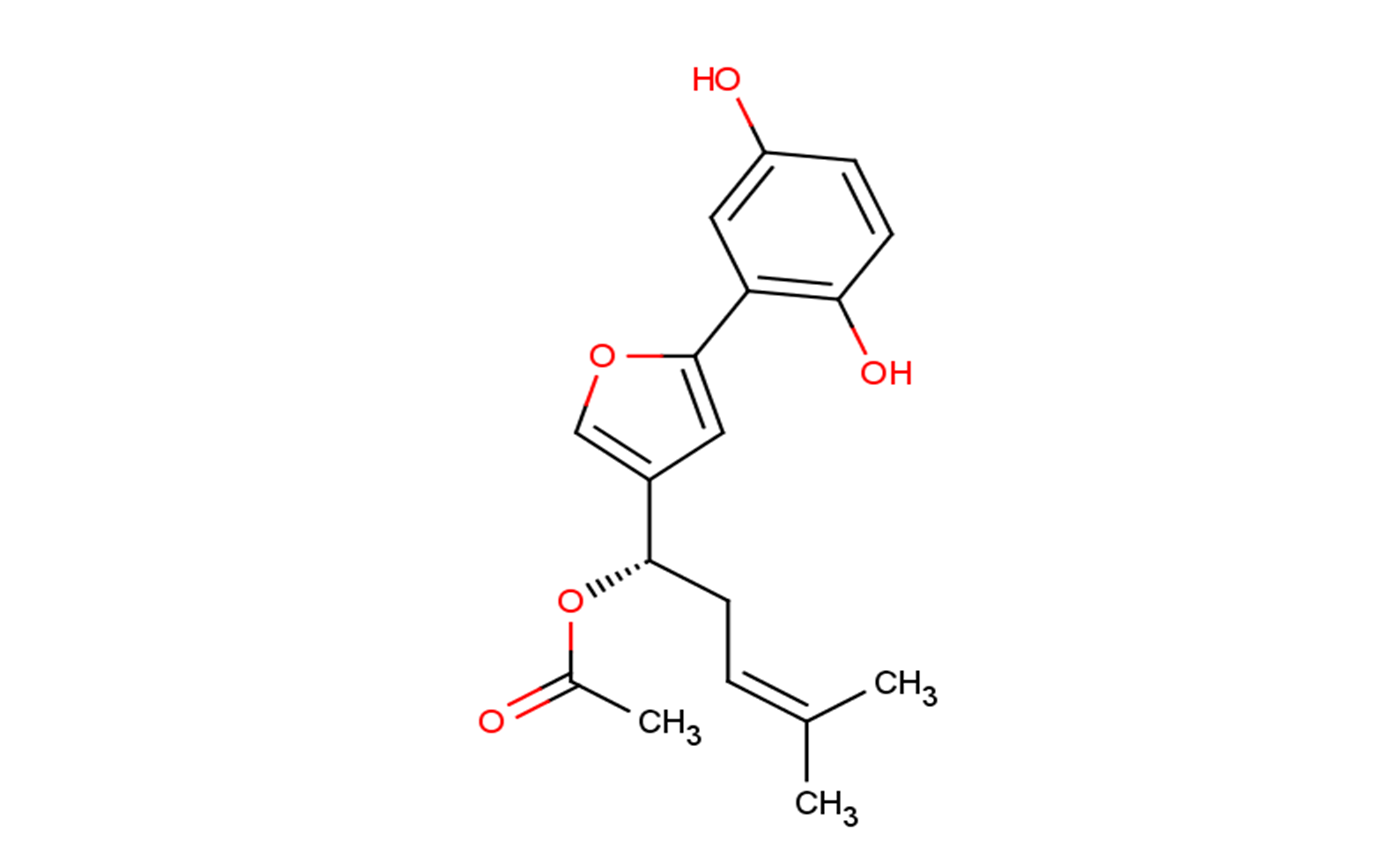
Shikonofuran A
CAS No. 85022-66-8
Shikonofuran A( —— )
Catalog No. M22821 CAS No. 85022-66-8
Shikonofuran A is a natural product isolated from Lithosperraum erythrorhizon Sieb.
Purity : >98% (HPLC)
 COA
COA
 Datasheet
Datasheet
 HNMR
HNMR
 HPLC
HPLC
 MSDS
MSDS
 Handing Instructions
Handing Instructions
| Size | Price / USD | Stock | Quantity |
| 5MG | 495 | In Stock |


|
| 10MG | 927 | In Stock |


|
| 100MG | Get Quote | In Stock |


|
| 200MG | Get Quote | In Stock |


|
| 500MG | Get Quote | In Stock |


|
| 1G | Get Quote | In Stock |


|
Biological Information
-
Product NameShikonofuran A
-
NoteResearch use only, not for human use.
-
Brief DescriptionShikonofuran A is a natural product isolated from Lithosperraum erythrorhizon Sieb.
-
DescriptionShikonofuran A is a natural product isolated from Lithosperraum erythrorhizon Sieb.
-
In Vitro——
-
In Vivo——
-
Synonyms——
-
PathwayOthers
-
TargetOther Targets
-
RecptorOthers
-
Research Area——
-
Indication——
Chemical Information
-
CAS Number85022-66-8
-
Formula Weight316.35
-
Molecular FormulaC18H20O5
-
Purity>98% (HPLC)
-
Solubility——
-
SMILESOC1=C(C=C(O)C=C1)C2=CC([C@@H](OC(C)=O)C/C=C(C)/C)=CO2
-
Chemical Name——
Shipping & Storage Information
-
Storage(-20℃)
-
ShippingWith Ice Pack
-
Stability≥ 2 years
Reference
molnova catalog



related products
-
Steviolmonoside
Glucosilsteviol is a sophorose component of steviol replaced by glucose.
-
VLX600
VLX600 is an iron-chelating oxidative phosphorylation (OXPHOS) inhibitor, is a cell-permeable anticancer agent.
-
Geranyl linalool
Geranyl linalool is a fragrance ingredient extracted from Brunfelsia uniflora with potential insecticide, antibacterial, antioxidant and anticancer activities.



 Cart
Cart
 sales@molnova.com
sales@molnova.com


